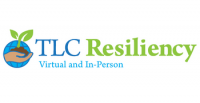What is resiliency and how can we become more resilient?
Resilience can be defined as “the ability to bounce back from negative emotional experiences and the flexible adaptation to the changing demands of stressful experiences.” Let’s face it, some of us are just more resilient than others. Have you ever read a story, watched a film, or met someone who is thriving despite setbacks in the past? Were you astonished by their perseverance and ability to overcome adversity? Did you think to yourself that if you were in their shoes, you would have given up? If so, you’re not alone. Many of us want to be more resilient, but don’t know what it takes, or how to get there. TLC-VR is here to help with your journey towards resilience.
How can we become more resilient?
Becoming more resilient begins with recognizing the variables that contribute to a person’s resilience. Specifically, biology, self-awareness, self-regulation, mental agility, optimism, self-efficacy, and connections can help or hinder your levels of resilience.
Biology and Resiliency
Beginning with biology, heritability plays a role in how resilient we are. How our bodies are prone to, and react to stress has effects on resilience. But, while nature plays a role, nurture is equally important. Our genes do not dictate everything; we have an ability to change the way we react to our experiences.
Resiliency: Self-awareness and Self-Regulation
Self-awareness and self-regulation are two other important factors in resilience. Self-awareness helps us track our emotions, thoughts, and reactions. It also helps us keep tabs on our physiological responses to stress (e.g. heart rate, breathing rate). Knowing our strengths and weaknesses is also vitally important– we can leverage strengths to overcome challenges, and compensate for weaknesses to achieve better outcomes. Self-regulation helps us change our thoughts, emotions, and physiology when what we’re experiencing isn’t helping us in a situation. We need skills of self-regulation to help down-regulate our fight-or-flight response.
Resilience and Mental Agility
Mental agility helps us look at things from multiple perspectives, which in turn helps with resilience. Looking at different perspectives helps us problem solve and identify the root cause of a problem, solutions to the problem, and enactment of those solutions.
Optimism and Resilience
Optimism (i.e., the belief in a positive future) is vital for resilience. Recognizing that despite current setbacks, the future is bright, and separating what you can and can’t control in a situation will help you become more resilient. Having self-efficacy and an “I can” attitude is also extremely important.
Resiliency and Building Connections
Lastly, connections with others are critical variables in resilience. Having people and connections in your life (e.g., family, friends, community, workplaces, etc.) that you can rely on can grow interpersonal and intrapersonal variables. On the other hand, surrounding yourself with the wrong people can erode our resilience over time. Spirituality is also important– feeling connected to something larger than yourself is proven to promote resilience.
All of these factors are important to consider on the road to resilience. TLC-VR is here to help you along the way. With our groups, we will delve deeper into these variables and work towards changing the way we react to and approach life stressors.

